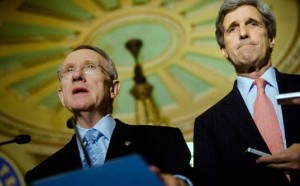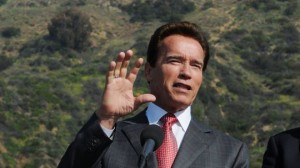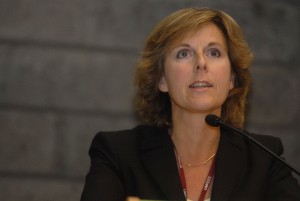While the United States is unlikely to pass a climate bill in the near future, there may be greater hope from one of the country’s closest allies: France. A few months ago, France passed a major bill that will deeply transform the country’s environmental law, including its approach to climate change. But while the outcomes of the measure are promising, a variety of criticisms remain.
After an exhausting legislative process, the “Grenelle de l’Environnement” ended with the adoption of the “Grenelle 2” bill this May. Enacted on July 13, three years after the process was launched by then-newly elected president Nicolas Sarkozy, the new legislation covers environmental topics such as climate and energy, biodiversity protection, public health, sustainable agriculture, waste management, and the governance of sustainable development. In addition to being a comprehensive environmental bill, Grenelle 2 implicitly defines the French sustainable development strategy for years to come.
Grenelle de l’environnement was named after the so-called “negotiations of Grenelle” on wages that took place in 1968, when France was paralyzed by a general strike. Back then, the primary negotiators were the government, unions, and employers. The Grenelle de l’environnement, launched in 2007, extended the consultation to five main stakeholder groups—the State, employers, unions, environmental NGOs, and local governments—to bring it more in line with the participatory nature of sustainable development.
On the climate front, France is likely to meet its current emissions reduction goals. [Read the rest of this ReVolt Blog here]








 Lange Zeit sah es so aus, als ob die Klima-Karawane aus Regierungsdelegationen, Interessenvertretern und Umweltschützern nur auf der Stelle tritt. Beim letzten großen Zusammenkommen auf höchster Ebene im vergangenen Dezember wie auch bei den unzähligen Vorbereitungstreffen ging es so zaghaft voran, dass viele den UN-Klimagipfel schon abgeschrieben hatten.
Lange Zeit sah es so aus, als ob die Klima-Karawane aus Regierungsdelegationen, Interessenvertretern und Umweltschützern nur auf der Stelle tritt. Beim letzten großen Zusammenkommen auf höchster Ebene im vergangenen Dezember wie auch bei den unzähligen Vorbereitungstreffen ging es so zaghaft voran, dass viele den UN-Klimagipfel schon abgeschrieben hatten. From November 9 to 11, around 25 German and U.S. journalists and climate policy experts met at the Aspen Wye Conference Center on the Chesapeake Bay in Maryland to discuss the climate policy in Europe and the U.S. in view of the upcoming Copenhagen climate summit. The event was part of the Transatlantic Climate Bridge, and it not only aimed at providing journalists with the latest facts and figures on the summit but gave the participants the opportunity to exchange their views on the public debate in their respective countries, the status quo of the legislative process in Germany and the U.S., and the impact of climate change and respective policies on the economy and the international security, among others.
From November 9 to 11, around 25 German and U.S. journalists and climate policy experts met at the Aspen Wye Conference Center on the Chesapeake Bay in Maryland to discuss the climate policy in Europe and the U.S. in view of the upcoming Copenhagen climate summit. The event was part of the Transatlantic Climate Bridge, and it not only aimed at providing journalists with the latest facts and figures on the summit but gave the participants the opportunity to exchange their views on the public debate in their respective countries, the status quo of the legislative process in Germany and the U.S., and the impact of climate change and respective policies on the economy and the international security, among others.


 Half a year before the U.N. climate conference in Copenhagen, negotiators are far from agreeing on key components of a global climate deal. As envisioned in the 2007 Bali Climate Action Plan (or “Bali Roadmap”), the summit in December is supposed to deliver a follow-up agreement to the Kyoto Protocol under the United Nations Framework Convention on Climate Change (UNFCCC), which expires at the end of 2012.
Half a year before the U.N. climate conference in Copenhagen, negotiators are far from agreeing on key components of a global climate deal. As envisioned in the 2007 Bali Climate Action Plan (or “Bali Roadmap”), the summit in December is supposed to deliver a follow-up agreement to the Kyoto Protocol under the United Nations Framework Convention on Climate Change (UNFCCC), which expires at the end of 2012.